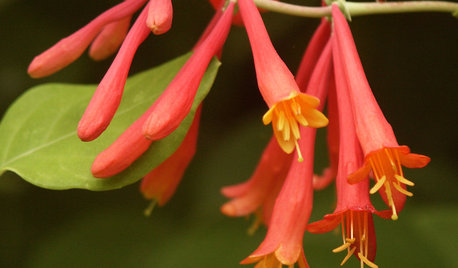Any one grow Camellia sinensis?
spring_chicken
17 years ago
Related Stories

GARDENING GUIDESYes, You Can Grow Food in a Shady Yard
Your shady garden doesn’t have to be forever barren. Berries, herbs and other shade-loving plants can produce a delicious bounty
Full Story
GARDENING GUIDESWhat Kind of Roses Should You Grow?
Want to add the beauty of roses to your garden? Find out which ones, from old-fashioned to modern, are right for you
Full Story
FARM YOUR YARDHow to Grow Vegetables in Containers
Get glorious vegetables and fruits on your patio with a pro’s guidance — including his personal recipe for potting mix
Full Story
EARTH DAYGrow a Beautiful Garden With Ecofriendly Greywater
Reducing home water waste means lower bills and a healthier planet. Here's how to set up a greywater home irrigation system that can help
Full Story
GARDENING GUIDESGrow Your Own Privacy: How to Screen With Plants and Trees
Use living walls to lower your home and garden's exposure while boosting natural beauty in your landscape
Full Story
FARM YOUR YARD6 Things to Know Before You Start Growing Your Own Food
It takes time and practice, but growing edibles in the suburbs or city is possible with smart prep and patience
Full Story
GARDENING GUIDES7 New Plants to Grow for Beautiful Foliage
Add color, structure and interest to your garden with these recently introduced plants that sport exceptional foliage
Full Story
GARDENING GUIDESGreat Design Plant: Lonicera Sempervirens
Grow this long-blooming, flashy flowering vine to cover a fence or arbor and attract hordes of hummingbirds all season long
Full Story
INSIDE HOUZZThere’s a Party in the Backyard, Says a Houzz Landscaping Survey
Entertaining, growing edibles and solving problems are goals for homeowners planning to revamp their yards
Full Story
CONTAINER GARDENS7 Deer-Resistant Flowers for Your Summer Containers
Grow these as protection for edibles or just for their colorful beauty — deer might not like them, but everyone else will
Full StoryMore Discussions









gardengal48 (PNW Z8/9)
Embothrium
Related Professionals
Kapaa Landscape Architects & Landscape Designers · Walnut Landscape Architects & Landscape Designers · Paradise Landscape Architects & Landscape Designers · Dunwoody Landscape Contractors · Englewood Landscape Contractors · Hilo Landscape Contractors · Oakland Landscape Contractors · Saint John Landscape Contractors · Saint Paul Landscape Contractors · Brushy Creek Fence Contractors · Chatsworth Fence Contractors · Evanston Fence Contractors · Glenpool Fence Contractors · Surfside Fence Contractors · Thousand Oaks Fence Contractorshemnancy
spring_chickenOriginal Author
Embothrium
botann
henryt
Embothrium
JudyWWW
henryt
silver_creek
albertine
Embothrium
hemnancy
albertine
spring_chickenOriginal Author
hemnancy